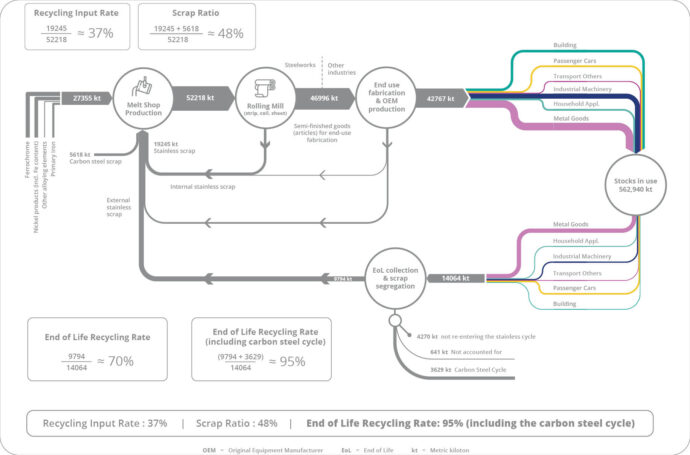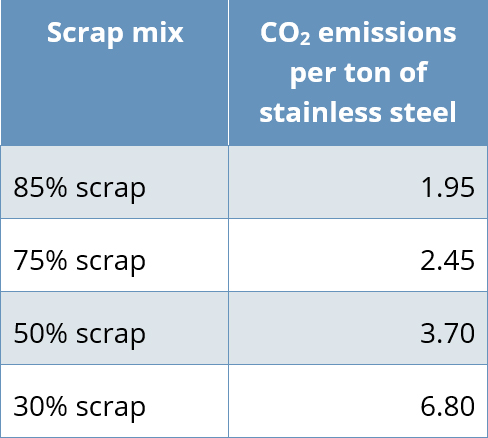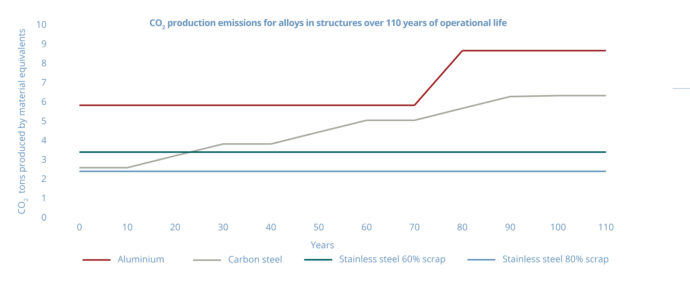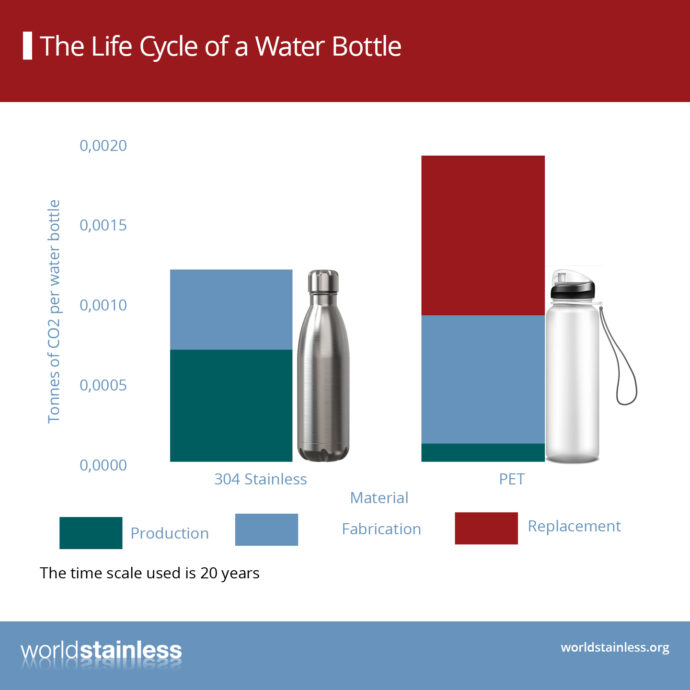Like any other major industry, the stainless steels industry endeavours to reduce its operational CO2 emissions on an ongoing basis. worldstainless has issued a report to clarify what emissions exist and where they originate from.
The report is available in Chinese, English and Japanese. [clicking on the language will open the report]
General facts
Stainless steel is the term used to describe a remarkable and extremely versatile family of metals that contain a minimum of 10.5 % chromium. Chromium is essential to achieve the metal’s “stainless” properties. Other alloying elements (such as nickel, molybdenum and copper) provide a wide range of mechanical and physical properties.
For the stainless steel industry, scrap has a high intrinsic value. The only limitation is the availability of scrap, especially in emerging countries. The durability of stainless steel restricts the availability of scrap. For example, when stainless steel is used in buildings, it remains there for many years and cannot be reused before the building is dismantled. Stainless steel is 100 % recyclable and has one of the highest recycling rates of any material. It has been determined that at least 95 % of stainless steels are recycled at the end of their life.
Over the past 20 years the world has produced approximately 800 million metric tons of stainless steel (worldstainless, 2024). World annual production increased from 25 million tonnes to over 58 million tonnes over the same time period. The growth in the use of stainless steel has been the highest of any bulk formable material in the world (worldstainless, 2023). Stainless steel’s properties, such as its 100 % recyclability, reusability, durability, corrosion resistance, extremely low maintenance needs and product safety partly explain this amazing consumption growth.
CO2 Emissions
In this report worldstainless clarifies what emissions exist and where they originate from and in order to achieve these objectives, we have quantified the CO2 emissions from the following three sources.
- Scope 1 Emissions which covers direct emissions from business-owned or business-controlled emission sources.
- Scope 2 Emissions which covers indirect emissions from the generation of purchased electricity, steam, heating and cooling consumed by the reporting company.
- Scope 3 Emissions which are associated with the extraction, preparation and transport of ores and the subsequent production and transport of ferro-alloys including the electricity needed for these processes.
These above-described three sources allow us to provide a cradle to gate view of the stainless steel industry’s CO2 emissions.
Scope 1 Emissions
The current scrap-based producer average is 0.41 tonnes of CO2 per tonne of stainless steel produced. 85 % of the producer results sit (normally distributed) in the range 0.20 to 0.50 tonnes of CO2 per tonne of stainless steel produced. In 2012 the average figure was 0.43 tonnes of CO2 per tonne of stainless steel produced.
Scope 2 Emissions
The current scrap-based producer average is 0.39 tonnes of CO2 per tonne of stainless steel produced. The figure has dropped from the average figure reported in 2023 which was 0.45. Changes in the regional energy grid mixes have positively impacted on Scope 2 emissions and thereby the figure has started to become lower than it historically was.
Scope 3 Emissions
Scope 3 emissions cannot be defined in the same manner. We know that there is a linear relationship between the amount of recycled content (scrap stainless steel and scrap low alloy steels) charged and the magnitude of Scope 3 emissions. The higher the recycled content the lower the Scope 3 emissions.
CO2 production emissions for alloys in structures over 110 years of operational life
The figure shows the CO2 production and maintenance emissions for stainless steels, carbon steel and aluminium. Two different types of produced stainless steel have been included, namely Stainless 1 which is produced with an 80% recycle content and Stainless 2 which is produced with a 60% recycled content.
The data comprises CO2 tons emitted per ton of material produced (Scope 1 + Scope 2 + Scope 3) plus any CO2 emissions associated with regular maintenance needs. The carbon steel emissions increase every 10 years due to regular maintenance needed to suppress corrosion. Stainless steel and Aluminium emissions do not increase as their passive films prevent the need for regular maintenance. The lifetime of stainless steels in-service beyond 110 years are not yet known as the industry is currently 111 years old.




